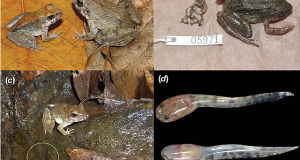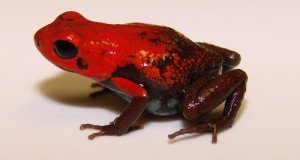In direct contrast to popularly-held theories, researchers at Australia’s University of Melbourne believe that the need to rapidly signal other chameleons, and not the need to hide from predators, has driven the evolution of the amazing color-changing abilities possessed by these lizards. In a sense, the primary function of color change is to render the animals more conspicuous – the opposite of being well-camouflaged!
Camouflage
However, the need to camouflage still exerts an influence. By being able to affect color changes in a mere fraction of a second, the lizards lessen the chance that predators will notice them.
Earlier research at the University of Melbourne has also revealed that at least 1 species does endeavor to “match” the background upon which in rests. In fact, Smith’s dwarf chameleon actually alters the degree of color change it exhibits in response to the type of predator it faces (please see article below).
Other Possibilities: My Experience
I have noticed that, unlike most animals that display (male birds, for example, often sing for hours on end, even if when other birds are not visible), chameleons only flash messages when in the presence of possible rivals or mates. This would also seem to limit their exposure to predators.
Chameleons also display an incredible range of subtle color variations, most not visible to the human eye which, I believe, also assists in “getting their message across” as quickly as possible.
Further Reading
To learn more about new research regarding color change and predator avoidance, please see my article Chameleons and Camouflage.
 That Reptile Blog – Reptile, Amphibian and Exotic Pet Care and Information
That Reptile Blog – Reptile, Amphibian and Exotic Pet Care and Information




thank you! I really liked this post!
Hello, Frank Indiviglio here.
Thanks for your taking the time to write in with your kind remark…much appreciated.
I look forward to your future comments and questions.
Good luck and please keep me posted.
Best regards, Frank Indiviglio.